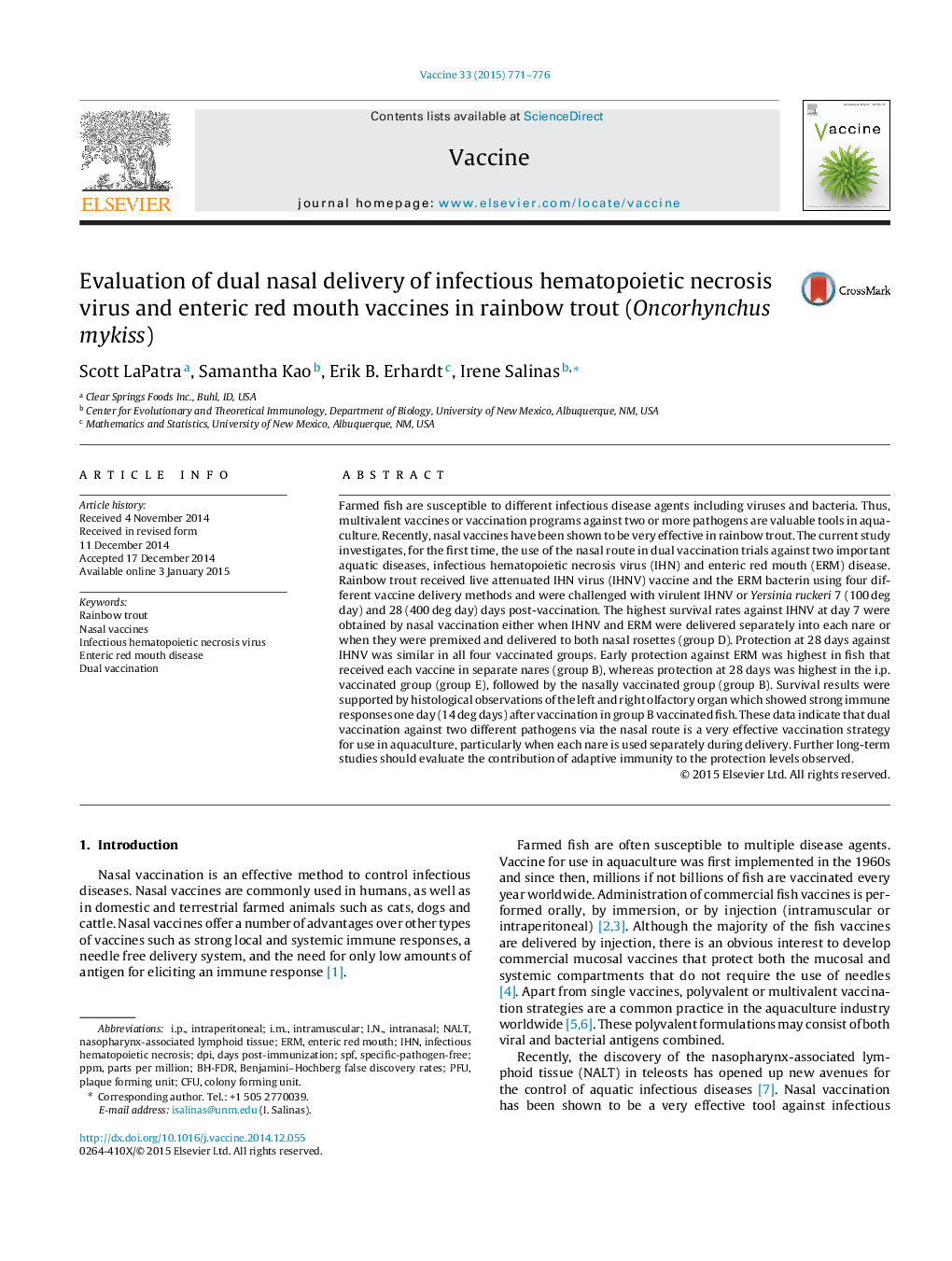| Article ID | Journal | Published Year | Pages | File Type |
|---|---|---|---|---|
| 10963589 | Vaccine | 2015 | 6 Pages |
Abstract
Farmed fish are susceptible to different infectious disease agents including viruses and bacteria. Thus, multivalent vaccines or vaccination programs against two or more pathogens are valuable tools in aquaculture. Recently, nasal vaccines have been shown to be very effective in rainbow trout. The current study investigates, for the first time, the use of the nasal route in dual vaccination trials against two important aquatic diseases, infectious hematopoietic necrosis virus (IHN) and enteric red mouth (ERM) disease. Rainbow trout received live attenuated IHN virus (IHNV) vaccine and the ERM bacterin using four different vaccine delivery methods and were challenged with virulent IHNV or Yersinia ruckeri 7 (100Â deg day) and 28 (400Â deg day) days post-vaccination. The highest survival rates against IHNV at day 7 were obtained by nasal vaccination either when IHNV and ERM were delivered separately into each nare or when they were premixed and delivered to both nasal rosettes (group D). Protection at 28 days against IHNV was similar in all four vaccinated groups. Early protection against ERM was highest in fish that received each vaccine in separate nares (group B), whereas protection at 28 days was highest in the i.p. vaccinated group (group E), followed by the nasally vaccinated group (group B). Survival results were supported by histological observations of the left and right olfactory organ which showed strong immune responses one day (14Â deg days) after vaccination in group B vaccinated fish. These data indicate that dual vaccination against two different pathogens via the nasal route is a very effective vaccination strategy for use in aquaculture, particularly when each nare is used separately during delivery. Further long-term studies should evaluate the contribution of adaptive immunity to the protection levels observed.
Keywords
Related Topics
Life Sciences
Immunology and Microbiology
Immunology
Authors
Scott LaPatra, Samantha Kao, Erik B. Erhardt, Irene Salinas,
